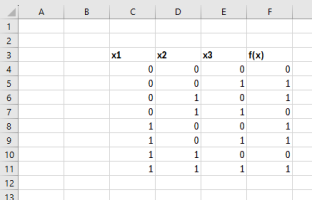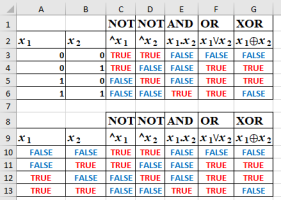Hello! I'd be really happy if someone helps
I have the following assignment:
In the table is given a binary function of three variables

Write and implement in the MS Excel environment formulas in the functional set (AND, OR, NOT) and in a basis (1, AND, XOR) to perform f(x)
I've tried various ways to do this but it still doesn't work.
The professor has given these two tables as examples...

The only thing I managed to do was f(x) =OR(AND(NOT(F4);F5;F6;NOT(F7);F8;F9;NOT(F10);F11)) but I'm pretty sure that this isn't one of the wanted formulas.
I have the following assignment:
In the table is given a binary function of three variables

Write and implement in the MS Excel environment formulas in the functional set (AND, OR, NOT) and in a basis (1, AND, XOR) to perform f(x)
I've tried various ways to do this but it still doesn't work.
The professor has given these two tables as examples...

The only thing I managed to do was f(x) =OR(AND(NOT(F4);F5;F6;NOT(F7);F8;F9;NOT(F10);F11)) but I'm pretty sure that this isn't one of the wanted formulas.
